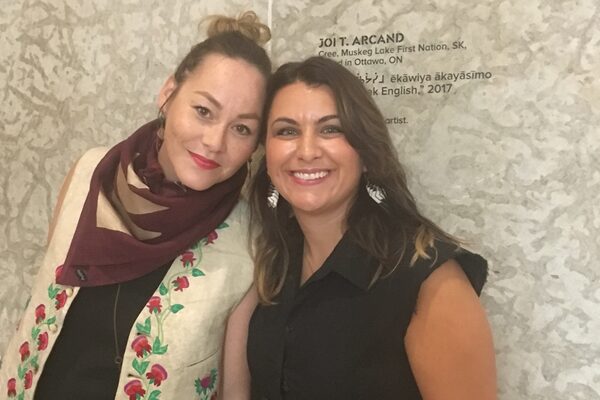
Insurgence/Resurgence curators Jaimie Isaac, left, and Dr. Julie Nagam. Nagam says as they were creating that show, the intention was always to build on it and launch a formal biennial.Breanne Lucky
The Winnipeg Art Gallery has announced plans for an Indigenous biennial – an exhibition of Indigenous contemporary art every two years – beginning in 2020. The Winnipeg Indigenous Biennial is the first international Indigenous biennial organized by a public art museum in Canada.
The inaugural exhibition, To Draw Water, will include artists from Canada and the U.S. North (First Nations that extend from Canada over the invisible border into the United States), New Zealand and Australia. It is being curated by Jaimie Isaac, WAG curator of Indigenous and contemporary art, and Dr. Julie Nagam, chair in the history of Indigenous art in North America at the University of Winnipeg/WAG. Both women are members of the WAG’s Indigenous advisory circle, established by the gallery last year (Nagam is its co-chair).
“Some of the best work that’s coming out of the Canadian arts scene is coming from Indigenous artists,” Nagam says, calling the idea long overdue. “We’ve seen a kind of explosion since the eighties of Indigenous contemporary art.”
Isaac and Nagam co-curated the 2017-18 exhibition Insurgence/Resurgence, the largest exhibition of Indigenous art the WAG has presented. Nagam says as they were creating that show, the intention was always to build on it and launch a formal biennial.

Two men discuss Kent Monkman's painting Death of the Female at the Winnipeg Art Gallery, during Nuit Blanche. The 2017-18 exhibition Insurgence/Resurgence was the largest exhibition of Indigenous art that WAG has presented.GREG GALLINGER/WINNIPEG FREE PRESS
The 2020 exhibition will examine how Indigenous nations are focusing on issues of sustainability, climate change and the environment. To Draw Water takes its name and theme from an Anishinaabemowin concept.
When the curatorial team was researching the idea, Isaac was looking up terms that deal with water and she found the word “nibi” – which means water, but also “to draw water.”
They loved the layers of meaning that term offered. In addition to the act of drawing (or gathering) water, there is the artistic practice of drawing, and drawing upon notions of water – whether the politics or the spirituality of water. “So it draws upon all of those layers associated with it,” Isaac says.
The inaugural biennial will coincide with the opening of the WAG’s new Inuit Art Centre. The plan is that they will both launch in the same month.
“I think it would be a really important monumental move to have both those exhibitions running concurrently. I think it would showcase that the Winnipeg Art Gallery is invested in Inuit, First Nations and Métis artists,” says Nagam, who is of Métis, German and Syrian descent.
The biennial will include commissions, artist residencies and education and outreach programs, in addition to the exhibition itself.
“What the biennial will mean is that it will to continue to push the boundaries of what Indigenous contemporary art can be and at the same time showcase the breadth of work that’s actually happening,” Nagam says. “I want Winnipeg to be the forefront of that. I want it to be the epicentre of Indigenous contemporary art.”
WAG director and chief executive Stephen Borys says Canada is experiencing a renaissance of Indigenous art and that WAG is “honoured” to be part of that.
“I think it situates us in a critical, pivotal place in terms of international Indigenous art but also just international contemporary art,” he says. “And given the history, the geography but also the current contemporary trends that go through this city and through this organization, we are in a very important place to in fact allow for a new forum that really has not existed.”
 Marsha Lederman
Marsha Lederman